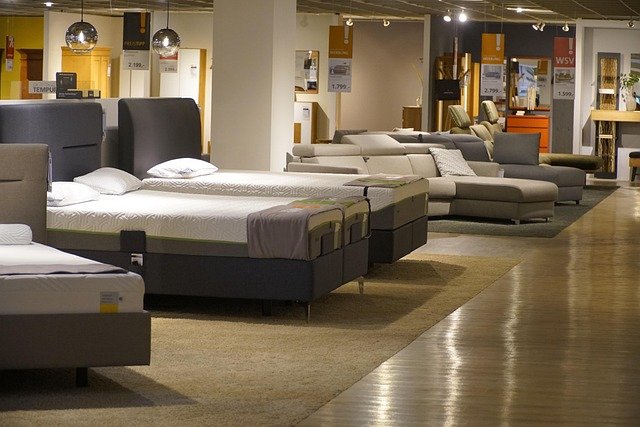How to choose furniture? Key criteria and buying tips
Selecting the right furniture for your home can be a daunting task, given the vast array of options available and the significant investment it often represents. Whether you're furnishing a new space or updating your current decor, understanding key criteria and having practical buying tips at your disposal can make the process much smoother. This guide will help you navigate the world of furniture shopping, ensuring you make informed decisions that blend style, comfort, and functionality.

What factors should you consider when choosing furniture?
When selecting furniture, it’s crucial to consider several factors to ensure you make the best choice for your space and lifestyle. Start by assessing your room’s size and layout, as this will determine the scale of furniture that will fit comfortably. Think about your personal style and the existing decor to ensure new pieces complement your home’s aesthetic. Functionality is equally important – consider how you’ll use the furniture and who will be using it. For instance, if you have children or pets, durability and easy-to-clean materials should be high on your list of priorities.
How important is quality when buying furniture?
Quality is a critical factor when investing in furniture. While it may be tempting to opt for cheaper options, especially when furnishing an entire room, high-quality pieces often prove more cost-effective in the long run. Well-made furniture tends to last longer, maintaining its appearance and structural integrity over time. Look for solid wood construction, reinforced joints, and high-grade upholstery fabrics. When considering quality, it’s also worth thinking about the furniture’s longevity – classic designs that won’t quickly go out of style can be a wise investment.
What are the key comfort features to look for in furniture?
Comfort should be a top priority when choosing furniture, especially for items you’ll use frequently like sofas, chairs, and beds. For seating, consider the depth and firmness of cushions, as well as the height and angle of the backrest. Ergonomic design is particularly important for office furniture to ensure proper support during long work hours. In bedrooms, mattress quality and support are crucial for a good night’s sleep. Don’t hesitate to test furniture in person when possible – sit, lie down, and move around to get a real sense of comfort before making a purchase.
How can you ensure furniture fits your space properly?
Proper fit is essential for both functionality and aesthetics. Before shopping, measure your room carefully, including doorways and staircases to ensure large pieces can be delivered without issues. Create a floor plan or use masking tape to outline furniture placement on your floor. This helps visualize how pieces will fit and how they’ll affect traffic flow. Remember to leave enough space around furniture for comfortable movement. For online purchases, always check the dimensions carefully and consider using augmented reality apps that allow you to visualize furniture in your space before buying.
What are some unique tips for furniture shopping in Canada?
In Canada, furniture shopping comes with its own set of considerations. Given the country’s diverse climate, it’s wise to choose materials that can withstand temperature fluctuations and humidity changes. Look for solid wood furniture that’s been properly kiln-dried to prevent warping. For upholstered pieces, consider fabrics that are both cozy for cold winters and breathable for warmer summers. Many Canadian furniture stores offer locally made options, which can be a great way to support local craftsmanship and potentially reduce shipping costs and environmental impact.
Where are the best places to buy a sofa or couch locally?
When looking for a place to buy a new sofa or couch in your area, you have several options to consider. Large furniture retailers often offer a wide selection and competitive prices, while local furniture stores may provide more personalized service and unique designs. Here’s a comparison of some common options:
| Provider Type | Advantages | Considerations | Typical Price Range |
|---|---|---|---|
| National Chains | Wide selection, competitive prices | May lack unique pieces | $500 - $3000+ |
| Local Furniture Stores | Personalized service, support local business | Potentially higher prices | $800 - $5000+ |
| Department Stores | Convenient, often has sales | Limited selection | $400 - $2500 |
| Online Retailers | Extensive options, convenient shopping | Can’t test in person | $300 - $4000+ |
| Custom Furniture Makers | Tailored to your specifications | Higher cost, longer wait times | $1500 - $10000+ |
Prices, rates, or cost estimates mentioned in this article are based on the latest available information but may change over time. Independent research is advised before making financial decisions.
Choosing the right furniture is a balance of practicality, comfort, and personal style. By considering factors such as quality, comfort, and proper fit, you can make informed decisions that will enhance your living space for years to come. Remember to measure carefully, consider your lifestyle needs, and don’t rush the process. Whether you’re shopping for a single piece or furnishing an entire home, taking the time to research and compare options will help ensure you find furniture that you’ll love and that will stand the test of time.




